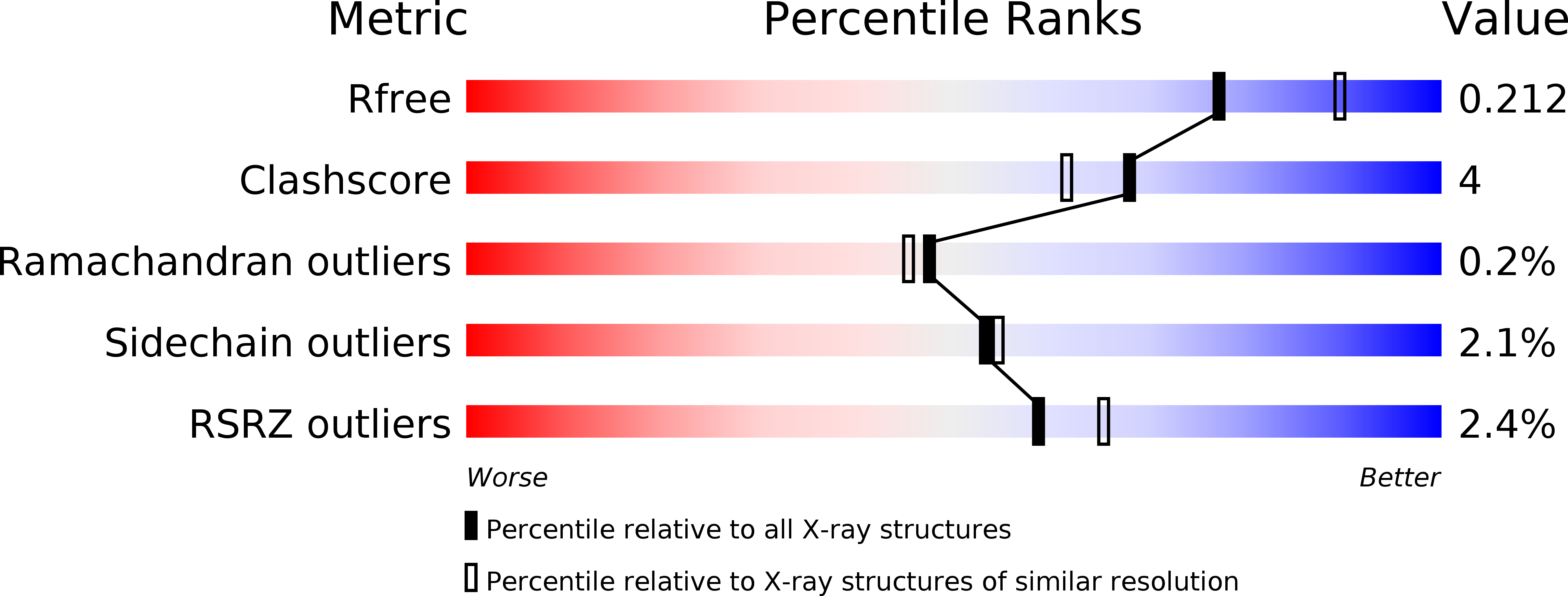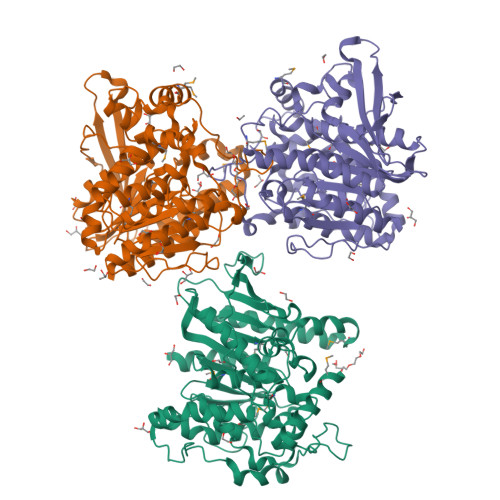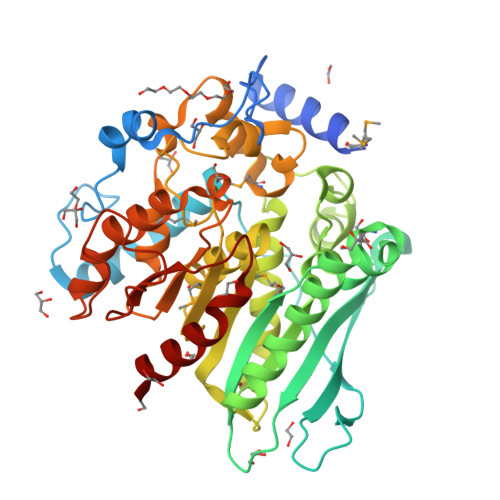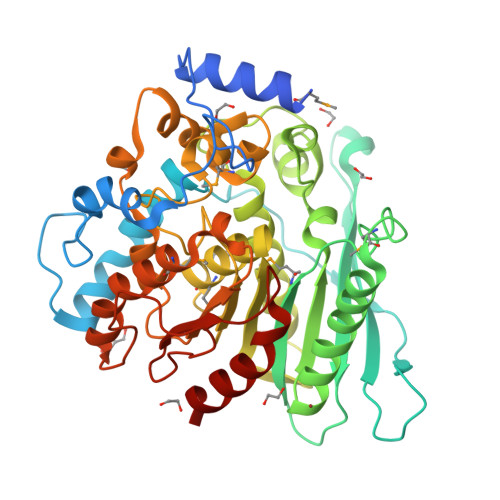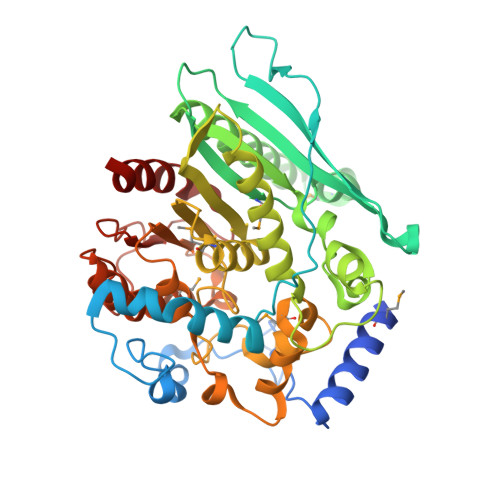Structure-function analyses reveal that a glucuronoyl esterase fromTeredinibacter turneraeinteracts with carbohydrates and aromatic compounds.
Arnling Baath, J., Mazurkewich, S., Poulsen, J.N., Olsson, L., Lo Leggio, L., Larsbrink, J.(2019) J Biological Chem 294: 6635-6644
- PubMed: 30814248
- DOI: https://doi.org/10.1074/jbc.RA119.007831
- Primary Citation of Related Structures:
6HSW - PubMed Abstract:
Glucuronoyl esterases (GEs) catalyze the cleavage of ester linkages found between lignin and glucuronic acid moieties on glucuronoxylan in plant biomass. As such, GEs represent promising biochemical tools in industrial processing of these recalcitrant resources. However, details on how GEs interact with their natural substrates are sparse, calling for thorough structure-function studies. Presented here is the structure and biochemical characterization of a GE, Tt CE15A, from the bacterium Teredinibacter turnerae , a symbiont of wood-boring shipworms. To gain deeper insight into enzyme-substrate interactions, inhibition studies were performed with both the WT Tt CE15A and variants in which we, by using site-directed mutagenesis, substituted residues suggested to have key roles in binding to or interacting with the aromatic and carbohydrate structures of its uronic acid ester substrates. Our results support the hypothesis that two aromatic residues (Phe-174 and Trp-376), conserved in bacterial GEs, interact with aromatic and carbohydrate structures of these substrates in the enzyme active site, respectively. The solved crystal structure of Tt CE15A revealed features previously not observed in either fungal or bacterial GEs, with a large inserted N-terminal region neighboring the active site and a differently positioned residue of the catalytic triad. The findings highlight key interactions between GEs and complex lignin-carbohydrate ester substrates and advance our understanding of the substrate specificities of these enzymes in biomass conversion.
Organizational Affiliation:
From the Wallenberg Wood Science Center, Division of Industrial Biotechnology, Department of Biology and Biological Engineering, Chalmers University of Technology, SE-412 96 Gothenburg, Sweden and.







